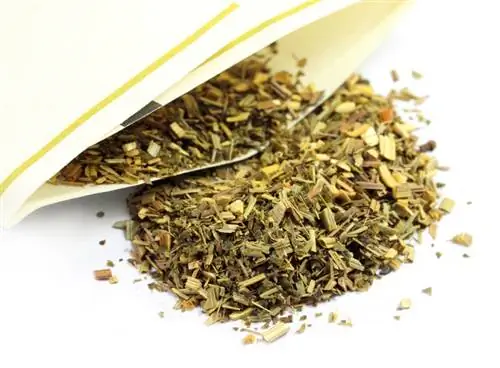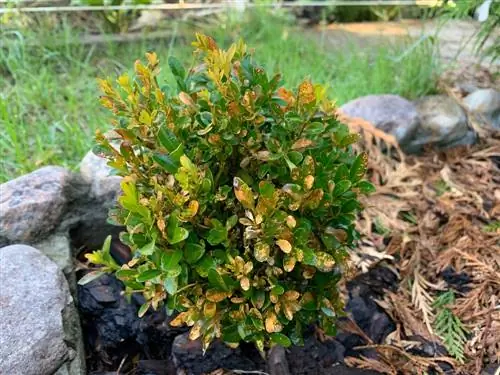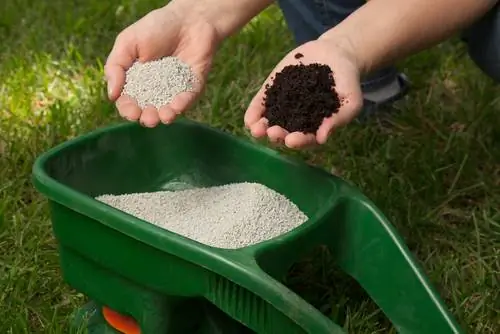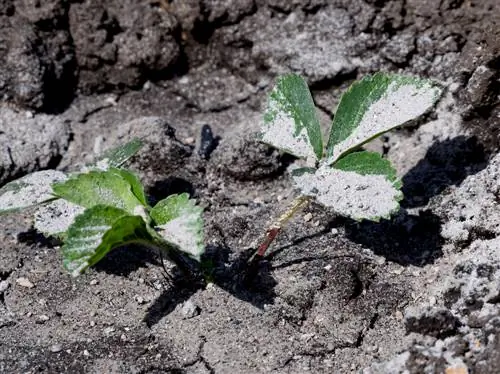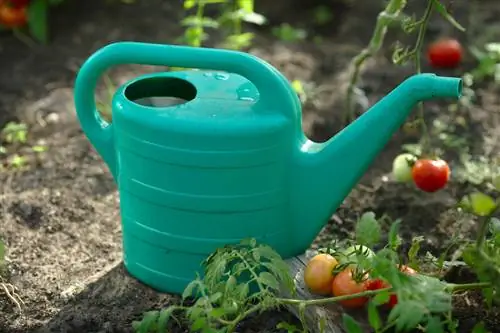- Author admin [email protected].
- Public 2023-12-16 16:46.
- Last modified 2025-01-23 11:21.
The dreaded shoot death on boxwood has been occurring for about ten years. This is due to the fungus Cylindrocladium buxicola, which has spread widely in a very short time and is threatening populations throughout Europe. The disease is difficult to combat; all sorts of miracle cures have already been announced. One of these is algae lime, which is said to contain and even suppress the infection. Can this actually work?
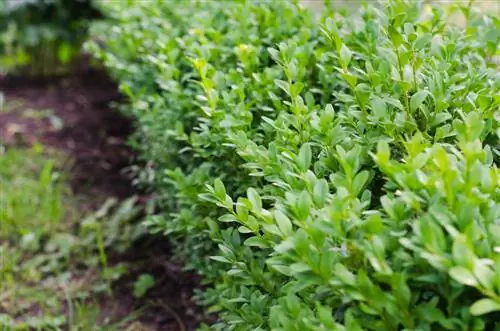
Can algae limestone combat shoot death in boxwoods?
Algae lime can provide short-term help against shoot dieback and boxwood borers on boxwood trees. However, it is important to dust plants sparingly, as too much powder can affect photosynthesis, growth and nutrient absorption.
What is algae lime and what is it used for?
First of all: Algae lime is a natural fertilizer that is obtained from the deposits of red algae and is not only rich in lime, but also in valuable minerals and trace elements. The powder is used for plant nutrition but also to improve garden soils. In addition, algae lime is said to contribute to plant protection, for example to combat fungal infections such as shoot death or pest infestation - such as the box tree moth.
Does algae lime help against shoot death and the boxwood moth?
In fact, algae lime seems to help against the above-mentioned plagues in the short term and to encourage the affected boxwood trees to sprout again in a he althy manner. In order to achieve this effect, infected and endangered plants often have to be dusted with the powder so that the leaves are covered with the fine dust. However, this brings with it further problems that can also end badly for the troubled Buchs:
- Hardly sunlight reaches the dusty leaves, which makes photosynthesis more difficult.
- The fine powder clogs the so-called stomata so that new shoots can no longer grow from them.
- As a result, shoot growth is severely slowed down.
- Frequent use unbalances the pH value of the soil.
- This increases so that there is no or insufficient absorption of nutrients.
Furthermore, the effects on the local bird and insect world have not yet been sufficiently researched - pollination of the box trees must be viewed critically, especially during flowering, as insects also ingest the fine dust in search of food.
What action should you take instead?
Once the box is infected by Cylindrocladium buxicola, there are currently no known effective remedies. All you can do is try to save the affected plant by pruning it back. Targeted prevention is therefore the method of choice: the fungus can only penetrate the leaves if they are wet for several hours. So keep the leaves as dry as possible or ensure that they dry quickly, for example in an airy location and with enough distance from neighboring plants.
Tip
Until recently, the caterpillars of the boxwood moth were considered poisonous to birds because they did not eat them. However, some garden birds and wasps have now been observed feeding on the pests. So if you keep your garden bird and insect friendly, then the borers will hopefully soon have no chance.


